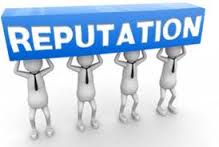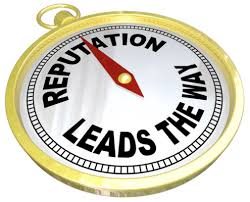Calculating the Incalculable: Reputational Damage (Part I of III)
 Today I begin a three-part series on reputational damage. The first part tries to define the term “reputational damage;” the second part focuses on managing threats to a company’s reputation; and the final posting proposes creation of a senior risk manager in a corporate leadership team.
Today I begin a three-part series on reputational damage. The first part tries to define the term “reputational damage;” the second part focuses on managing threats to a company’s reputation; and the final posting proposes creation of a senior risk manager in a corporate leadership team.
If you ask CEOs and board members about the threats to a company resulting from a DOJ enforcement action, you will invariably hear that the greatest threat is reputational damage to the company. Assuming the company has a certain amount of available resources, the imposition of a fine rarely “hurts” a company to the point of threatening the life of the company or seriously damaging the company’s ability to recover from the enforcement action.
While everyone notes the threat of reputational damage, what exactly is reputational damage, and what does it mean when a company’s reputation is harmed?
We all tend to measure or cite our gut reactions to these issues. We can at least cite some specific worst-case examples.
Apple suffered serious reputational damage because of adverse publicity related to Foxconn, a contract manufacturing location, and the working conditions of laborers in China. Apple suffered a lot of negative publicity when more gruesome details were disclosed about Foxconn.
Consider another more recent example. Jared Fogle, the long-time spokespersons for Subway, recently plead guilty to child pornography and sexual abuse of underage girls. Subway had to play defense and issue a press release stating that no one at Subway ever had knowledge of Fogle’s criminal behavior.
In the face of these controversies, we all can agree on the damage to Apple and Subway inflicted by these major controversies. In some cases, a company may have legal liability for the misconduct; in others, the company may not be legally liable but can suffer from association with the conduct.
The Fogle debacle underscores an important principle – conducting due diligence and knowing who you are hiring to assist your company. We all would be interested to know the due diligence that Subway conducted to determine whether to hire Fogle as a company spokesperson. You can imagine the controversy and the damage that would be created if it turns out that Subway knew or should have known about Fogle’s risks.
Aside from this high-profile example, companies face serious reputational risks when managing their supply chains, their business partners, and other persons who are employed by or associated with a company. In many cases, companies also face legal liability for managing their relationships with these entities and idividuals.
Some further examples of supply chain fiascos are easy to find — Costco faces a serious threat from allegations that its supply chain for shrimp products relies on child slaves. While there may be legal liability for violating child labor laws in the areas where they operate, or in contracting with companies involved in child labor, Costco faces a real and significant reputational threat as consumers, business partners, and other stakeholders turn away from Costco as a corporate partner.
 Corporate boards and CEOs are in an important position to monitor the company’s reputation and threats to its reputation. Everyone knows that the better the company’s reputation, the higher quality employees the company will attract to work at the company. Strong reputations translate into better economic performance.
Corporate boards and CEOs are in an important position to monitor the company’s reputation and threats to its reputation. Everyone knows that the better the company’s reputation, the higher quality employees the company will attract to work at the company. Strong reputations translate into better economic performance.
In many cases, companies with a strong market reputation can charge higher prices based on its reputation for quality, excellence and service. Customers are more loyal to companies with a strong reputation. In an economy where a significant percentage of market value comes from a number of intangible assets (brand equity, intellectual capital and goodwill), companies have to preserve and promote their reputations and mitigate the risk of reputational damage. In the end, reputational damage can reduce a company’s overall profitability and sustainability.
















1 Response
[…] Calculating the Incalculable: Reputational Damage (Part I of III) http://blogvolkovlaw.wpengine.com/2015/08/calculating-the-incalculable-reputational-damage-part-i-of-iii/ […]